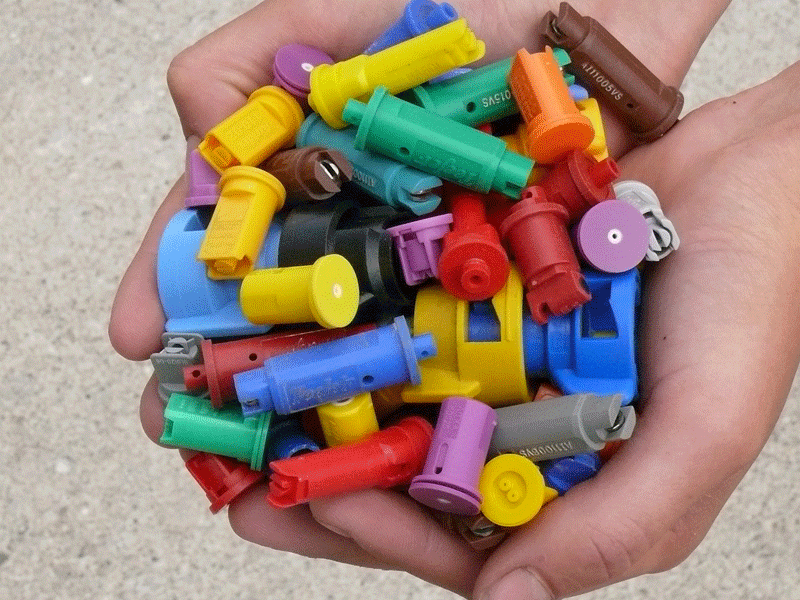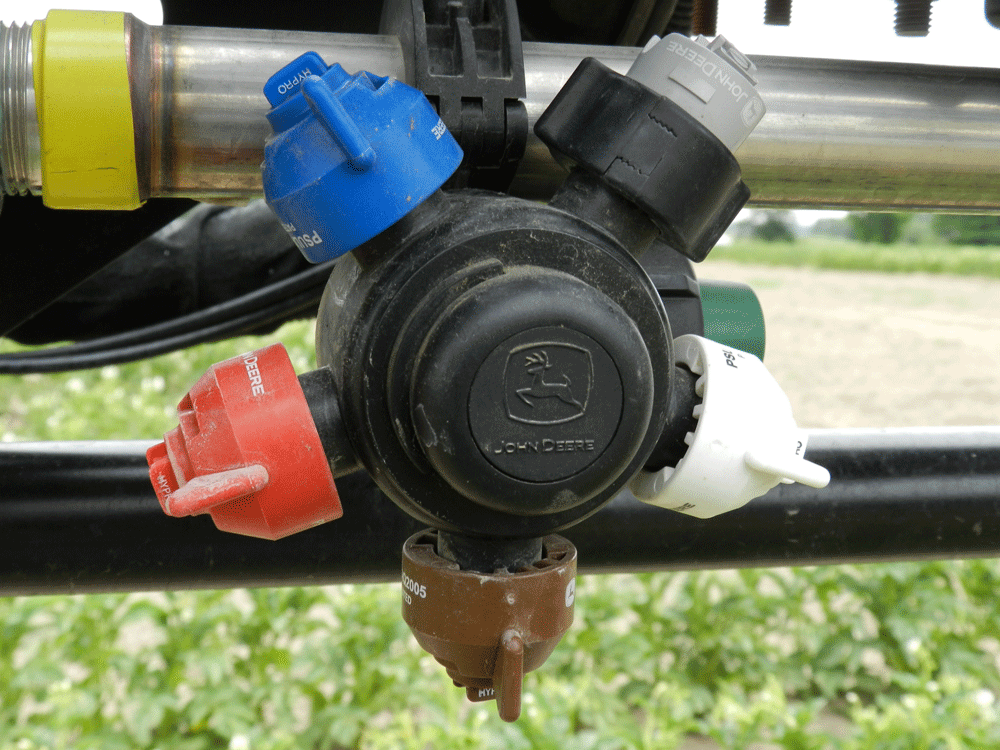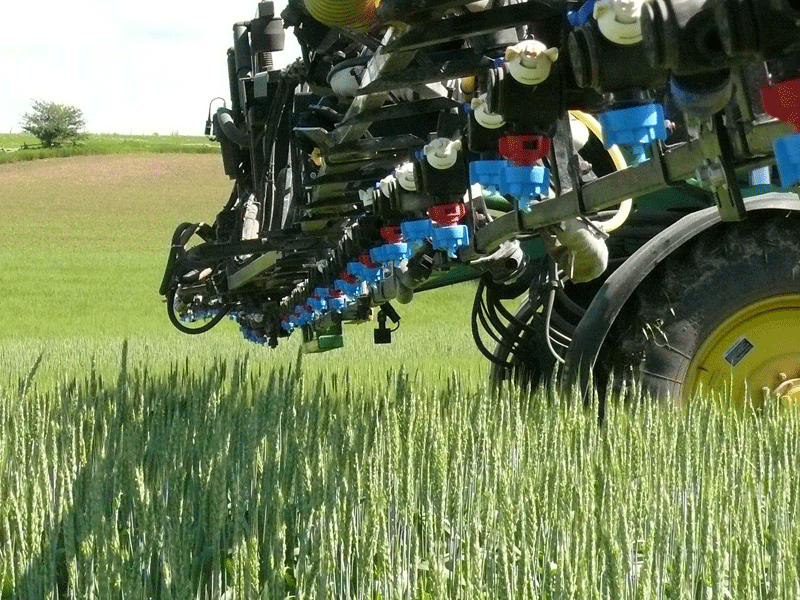Spray nozzle technology
CHOOSING THE RIGHT ONE FOR THE JOB
Spray nozzle technology has come a long way. In the early days you had just two choices, flat fan nozzles or cone nozzles. Today, there is no shortage when it comes to variety; even the oldest nozzles can still be purchased. With all of the products to choose from, selecting the perfect spray nozzle can be a daunting task. Helmut Spieser, an engineer with the Ontario Ministry of Agriculture and Food (OMAF), who specializes in spray application technology, has made it his mission to help farmers choose the perfect nozzle for the task at hand.

“It would be so nice if there was a golden book on nozzle selection, but there isn’t such a thing because the technology is constantly changing,” says Spieser. “Different manufacturers make similar nozzles, but they don’t make exactly the same nozzles. Choosing the right nozzle takes some homework.”
First, you should consider the job at hand. What are you spraying for? You will want to consider the type of crop you are spraying and its stature. If you are spraying for pests, you will need to consider the type of pest and where it is located. Keep in mind that herbicides (pre- and post-emergent), fungicides and insecticides all require a different type of nozzle. You also need to consider the plant leaves themselves. Are they hairy, waxy, vertical or slim? Is there canopy interference?
Possibly the most important consideration you will need to make, though, is droplet size, which will determine both coverage and drift potential. Very fine droplets have more drift potential than coarse droplets. But fine droplets provide more thorough coverage than coarse droplets do.
What we know about spray nozzles
The fundamentals of spray technology have not changed. As water volume increases, spray coverage increases as well. You get more coverage with smaller droplets than with coarser, larger droplets. Very fine droplets can provide great coverage, but are prone to drift, which can cause crop injury and yield reductions. Meanwhile, spray nozzles that are designed to reduce drift often produce poorer coverage, meaning there will almost always be a compromise.
“Coarse drops are drift-resistant, but with some of the products we apply we want uniform coverage,” says Spieser. “We want a lot of droplets on the leaf surface. If it’s a post-emergent application where we’ve got weed seedlings coming up through the soil and we’re spraying with a coarse spray, we won’t produce as many droplets, so we may miss the weed seedlings or we don’t put enough droplets on any particular plant to kill it – otherwise we don’t get a lethal dose on the plant foliage.”
“Finer droplets have a place with products like contact sprays for fungicides and insecticides where we have to put a layer on there to either protect the disease from setting up and taking hold or prevent insects from feeding and causing plant damage and yield loss,” he continues.
“The farmer is basically in the middle of a teeter-totter,” says Spieser. “One end of the teeter-totter is drift management. The other one is spray coverage. By his nozzle choice, the teeter-totter is going to tip one way or the other. Yes, he would like drift management, but he would also like spray coverage.”
The key to reducing drift is to minimize the distance that the droplets have to travel. Ideally, the space between the nozzles and the area of coverage should be at least 20 inches. Many of today’s products list both the recommended droplet size and the required distance on their packaging – but many still do not.
“New product labels will eventually provide more detailed language regarding droplet size recommendations for the product. This should help with your nozzle selection process,” says Spieser. “Unfortunately, it may be some time before all products have this information stated on the label.”
Although there are many styles to choose from when it comes to herbicide applications, flat fan nozzles are preferred over cone nozzles simply because they produce a more uniform spray. Always choose the nozzle that produces the largest droplet size needed for the job. And be sure to read the product’s label for further instructions.

For fungicide and insecticide applications choose a nozzle that provides medium spray quality. Follow the directions provided on the label for water volumes. And always remember that you are spraying for leaf area, not field acres.
Special cases, like spraying for fusarium head blight, require special tools. Since the fungicide needs to be applied on all surfaces of the wheat heads you will require special nozzle orientation to get the job done right.
With so many products on the market, it is no wonder that there’s so much confusion. Once you have narrowed it down to no more than three, talk to your neighbours, your ag-business contacts or anyone you trust when it comes to nozzles and spraying.

“Tell them what you are planning to spray and how and when you plan to do it,” Spieser says. “Ask lots of questions, but do listen to the answers provided. There are no guarantees, so the nozzle choice you make is yours and the job it does is yours.” •





















